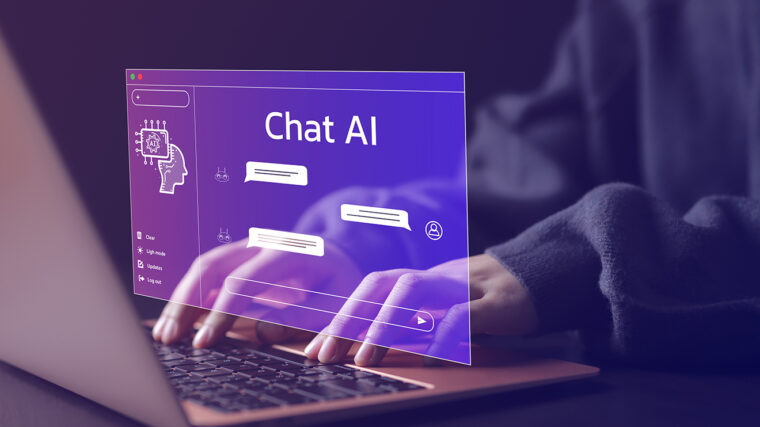Introduction
The advent of Artificial intelligence (AI) is rapidly transforming various fields, including education. AI impacts the planning of learning, the handling of tasks, and their evaluation. One of the AI tools that is increasingly impacting education is ChatGPT, an AI-powered chatbot developed by OpenAI, a San Francisco-based start-up.
This article explores how ChatGPT impacts education and learning. It discusses how teachers and lecturers who have used it since its launch benefited from it. It also highlights the challenges and worries regarding how it disrupts education and assessments.
The result of the research provides suggestions on how ChatGPT can be used to facilitate learning.
Overview of the impact of ChatGPT on education
ChatGPT is an acronym for Chat Generative Pre-trained Transformer. It is an artificial intelligence chatbot developed by OpenAI and launched in November 2022. This AI-based chat is built on top of OpenAI’s GPT-3, a family of large language models using the technic of supervised and reinforcement learning (OpenAI, 2023c). According to the OpenAI website, this chatbot is capable of having a dialogue format capable of answering “follow-up questions, admit its mistakes, challenging incorrect premises, and rejecting inappropriate requests” (OpenAI, 2023b). Since its launch, ChatGPT has created a buzz in academia. As of Feb. 4, 2023, close to 30 million users have visited both the OpenAI’s website and its ChatGPT (CNBC, 2023). Almost a year later, the number of users reached 1,6 billion (Duarte, 2024).
ChatGPT allows users to enter written prompts and interactively receive human-like text. One of the most important abilities of ChatGPT is how it provides personalized learning, tailored responses to queries as well as how it’s able to explain difficult concepts. Researches by Tsivitanidou et al. showed that AI is useful for both teachers and students by facilitating learning processes, giving guidance, supporting in assessment, and helping in administrative work (Tsivitanidou & Ioannou, 2021). Another study based on a user experience supported by qualitative and sentiment analysis on the perception of users on ChatGPT in education reveals how it reduces the instructional workload of teachers and gives immediate feedback to students.
Many have expressed their reservation about the spread of this technology as they are afraid that it will either substitute teachers or pave the way for plagiarism. In an article written in Forbes entitled ChatGPT: A Threat to Higher Education? Dr. Jason Wingard suggests that large language model may bring serious disruption in higher education and may “do away with higher education as well as journalism, code writing”(Wingard, 2023). The same sentiment is shared by Gmail developer Paul Buchheit who predicts in a tweet dated December 1, 2023 that the Google search engine “may be only a year or two away from total disruption” (Paul Buchheit, 2023).
Analysis of the impact of ChatGPT on Education and academia
The impact of ChatGPT on higher education is studied through the lens of some university teachers in the Vaasa region in Finland. Since the advent of this new technology, some of them have been using it in their teaching and research. Data collected from their experience help to have a basic overview and understanding of the deep impact AI chatbots in particular, an AI in general, is having on education. Below are just a few of their observation.
Creating learning assessments and class assignments
During the development of courses, developing learning assessments and assignment materials take a lot of time. Some teachers took advantage of ChatGPT by asking it to help design these materials. The discussion with the chatbot begins with setting up the context by inputting the objective and main topic of the course or chapter at hand and then making a request.
For instance, a Project management course teacher finds it time-consuming to get a free case for the course. He had the following prompt as seen the figure below

The response from ChatGPT is seen below:

The answer generated clearly shows not only the background and the scenario of the case but it also adds seven interesting discussion questions.
To take it to the next level query was made to generate an instruction for a final project as partly seen in Figure 3.

Using ChatGPT in this way aligns with a research made by Zhai (2023) who suggests that teachers could make good use of ChatGPT when creating learning material while saving time. He also contends that teachers could create learning assessment items using ChatGPT while saving time and effort and potentially improving the quality of the questions by adhering to a standard framework. With the abilities given by ChatGPT, teachers could develop open-ended question prompts that are aligned with the learning objectives and success criteria of the teaching lessons.
Useful ChatGPT prompt to be used in academia
Asking the right question or having the correct prompt is the best way to get help from ChatGPT. ChatGPT prompt is defined by ChatGPT itself as the initial input or question given to the ChatGPT model to guide its response. The prompt acts like a guide that gives directives and clues to what kind of information the user is looking for. (OpenAI, 2023a)
By using multiple prompts, often in the form of a conversation, the user can have a conversation with ChatGPT till he gets a satisfying answer.
Below are 10 most used prompts compiled for teachers.
| Aim | Prompts | Source |
|---|---|---|
| 1. Create a course case study and questions | Drawing from the learning objectives and the chapter’s outline, create a case study along with a discussion question that enables students to bridge theory with practical application. | Author |
| 2. Create a case study for a course | Using the learning objectives and the chapter’s outline [insert the learning objectives and the chapter’s outline] as a foundation, formulate detailed instructions for the final project, along with specific assessment criteria | Author |
| 3. Assignment Clarification | Clarify instructions for an upcoming assignment, providing step-by-step guidance and expectations. | Author |
| 4. Generating questions | Create multiple-choice questions quiz based on [specify the topic] | Author |
| 5. Classroom activities | Create a list of interactive classroom activities for [concept being taught] | (Writesonic, 2013) |
| 6. Assessment | Create a marking scheme for evaluating student writing in line with the [concept being taught] | (Writesonic, 2013) |
| 7. Course plan | I need help developing a lesson plan on [specify the course] renewable energy sources for Bachelor level students | (Writesonic, 2013) |
| 8. Explaining in a simpler term | Explain this accounting term to schoolchildren | Author |
| 9. Checking for plagiarism | Identify any potential plagiarism or uncited sources in the student’s work | (OpenAI, 2023a) |
| 10. Assessing students’ assignment | Assess the student’s use of evidence and examples in supporting their arguments on [Topic]. | (Writesonic, 2013) |
Conclusion
ChaGPT is revolutionizing every sector of human life, especially the educational field. While there are many benefits to using it for better learning experience, creation of learning material, assessing and giving feedback to students, there are also justifiable concerns about the integrity of education in the future. Many instructors raised alarm about plagiarism issues and the possibility that their assignments are completed by a machine rather than their students. Just like any disruptive technology, ChatGPT looks promising but it also raises concern. It is therefore important that policymaker’s setup regulations and frameworks that make the use of any AI tool a complement to education rather than allowing it to completely replace teachers since the human touch will always be important in education.




